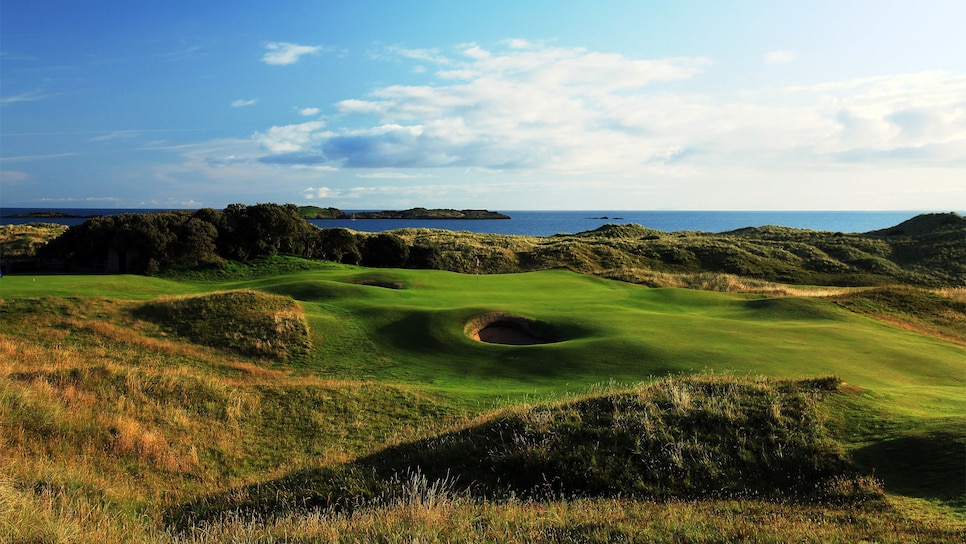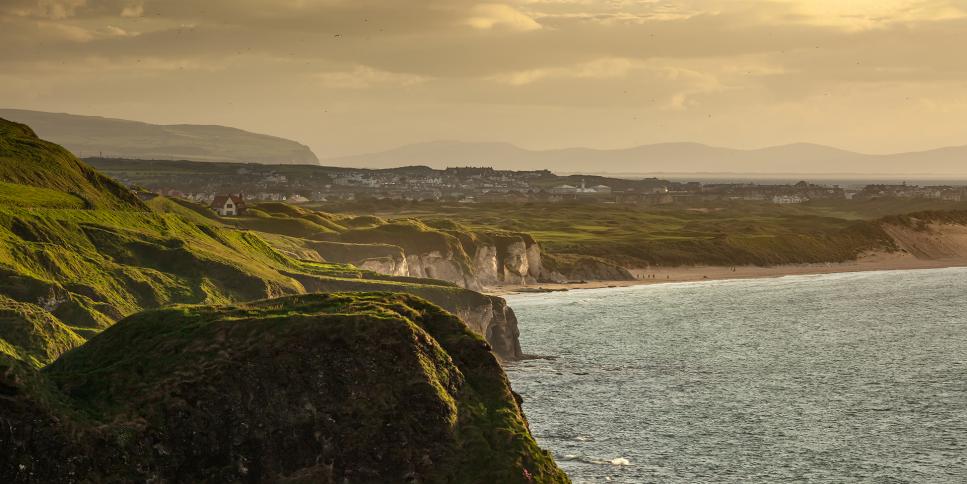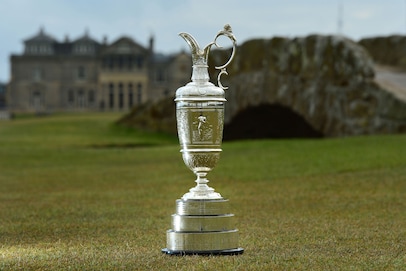Viewers accustomed to watching the British Open contested at the same venerable eight or nine courses each summer, not to mention the players competing on them, became smitten with Royal Portrush in Northern Ireland when the competition returned there in 2019. It was the first time the major had been held outside of England or Scotland since 1951, when it also visited Portrush.
We’re still getting to know Royal Portrush, but we like what we see. That first flush of feeling will be rekindled when the club’s Dunluce Links course hosts the Open again July 17-20. With all due respect to those who might have been on hand 74 years ago for the initial foray into Northern Ireland, won by Max Faulkner, the 2019 event was the real coming-out party for Portrush, wowing players and spectators with its beauty, formidability and fresh energy.
Royal Portrush’s perennially saturated shades of emerald and ochre stand in contrast to the more washed-out, off-greens and tans recognizable at venues like Hoylake and Royal Lytham & St. Anne’s. The setting along sheer bluffs overlooking the North Atlantic matches Turnberry for visual drama. The holes memorably wind through some of the choppiest dunes among Open Championship courses, many strung through valleys like Royal Birkdale and others cresting over ridges like Royal St. Georges, working in tandem with elevation changes that have no peer. Portrush’s fairway bunkers, residing mainly within rather than on the edges of fairways, control lines and strategy as effectively as Muirfield’s.
The greens of links courses, particularly older courses, are generally not known for electric contour. Many sit low to the ground as extensions of wavy fairway and surrounding grades, ready to settle low shots that come bounding in under the ocean gales. Once more, Portrush is different. Its greens, originally designed by Harry S. Colt during his complete remodel of the course over new land in 1932, possess swales, pockets and crests that are common to Irish links but extreme to Scottish or English designs outside St. Andrews. Colt’s magnificent surfaces, particularly at the par 3s and holes like the par-4 first and par-4 14th, remain original. When remodeling was necessary at several existing greens, as well as at two new holes created in 2016 (the seventh and eighth), British architects Martin Ebert and Tom Mackenzie attempted to replicate Colt-like shaping. These internal movements create unique hole locations that can be challenging to get close to and complicate the paths of long lag putts, testing pace and break.
More important to the unique character of Portrush might be the areas around the greens and their wild formations. Many of the putting surfaces are nestled snuggly into dunes or surrounding mounds—the par-4 fourth and par4 11th are examples. More commonly, the surrounds sit above the fairways with edges that spill off into low basins and ravines leaving delicate pitches and chips from awkward stances. Avoiding these depressions—especially the deadliest hollows like left of No. 1, long left on the par-3 sixth, the ferociously deep bunker left of the par-4 14th and all along the right side of the 236-yard par-3 16th, one of Portrush’s most famous holes known as Calamity Corner—is the key to keeping good rounds alive.
After winning by six strokes in 2019, Irishman Shane Lowry, who described Royal Portrush as “incredible,” was more prescient than witty. “Everybody has been raving about how good the golf course was,” he said. “I’d be very surprised if [the Open] is not back here in the next 10 years.” It took only six because the sentiment behind the decision is the same: Royal Portrush was love at first sight. The chemistry seems right for a long relationship.
Is it the British Open or the Open Championship? The name of the final men’s major of the golf season is a subject of continued discussion. The event’s official name, as explained in this op-ed by former R&A chairman Ian Pattinson, is the Open Championship. But since many United States golf fans continue to refer to it as the British Open, and search news around the event accordingly, Golf Digest continues to utilize both names in its coverage.











